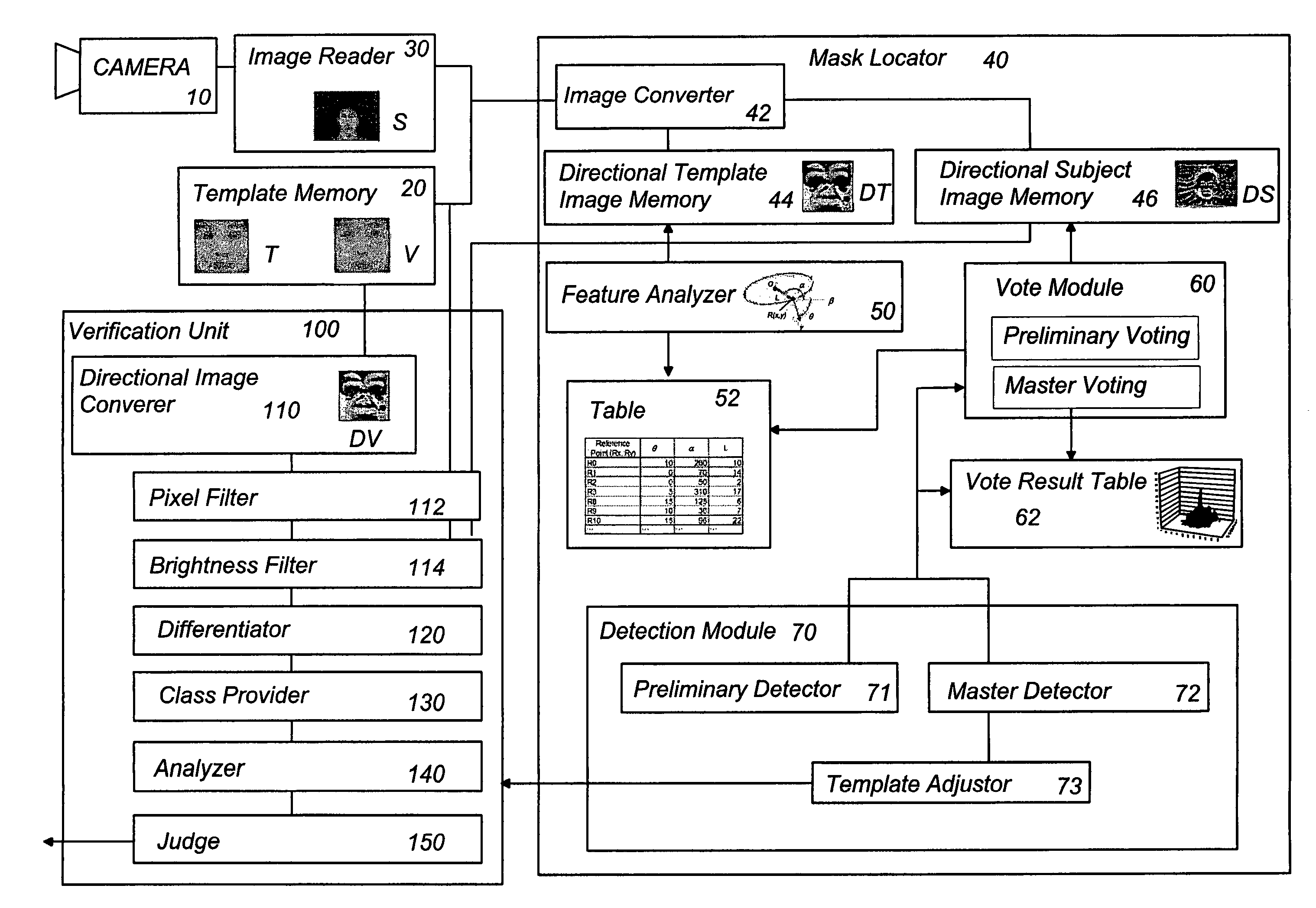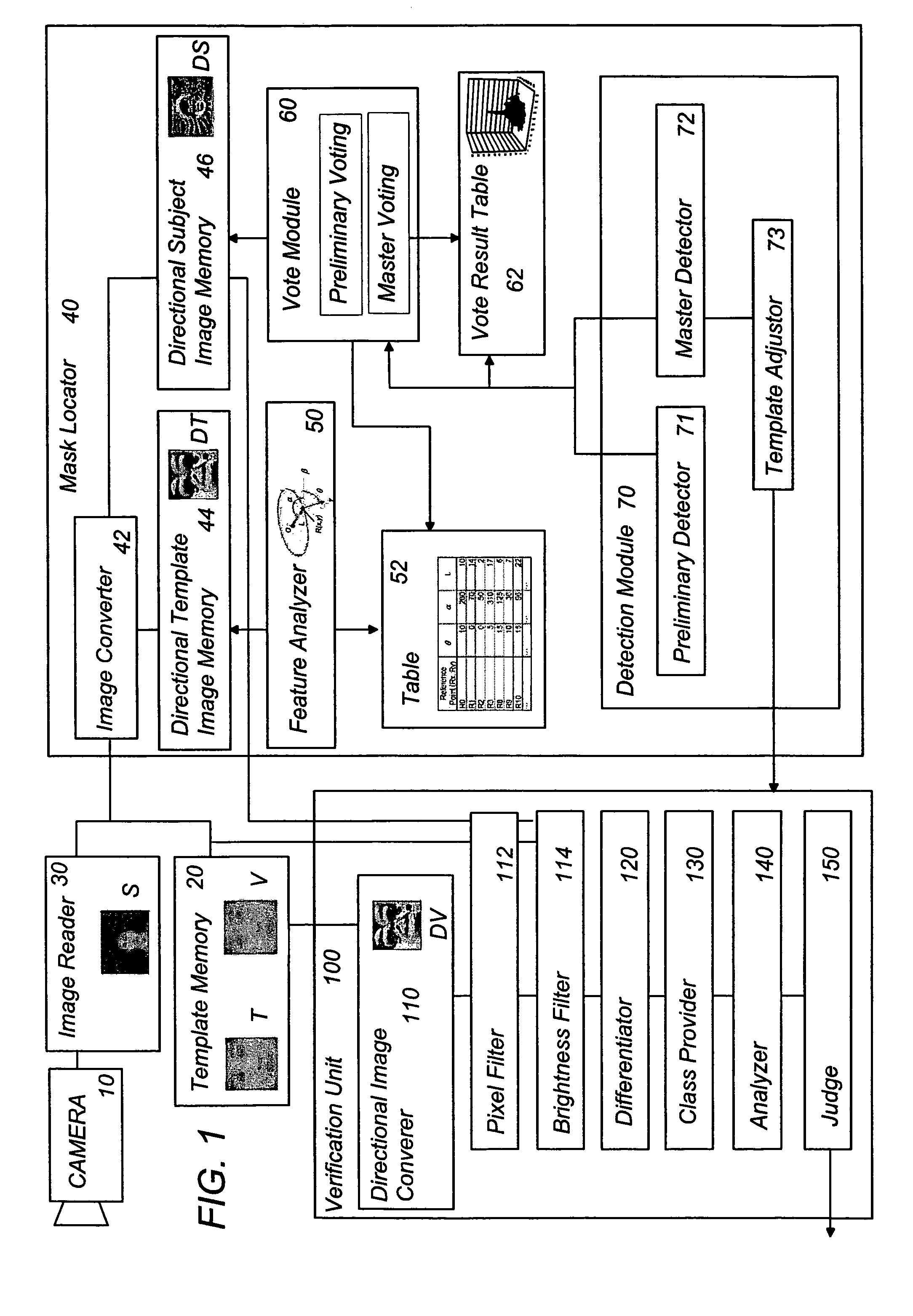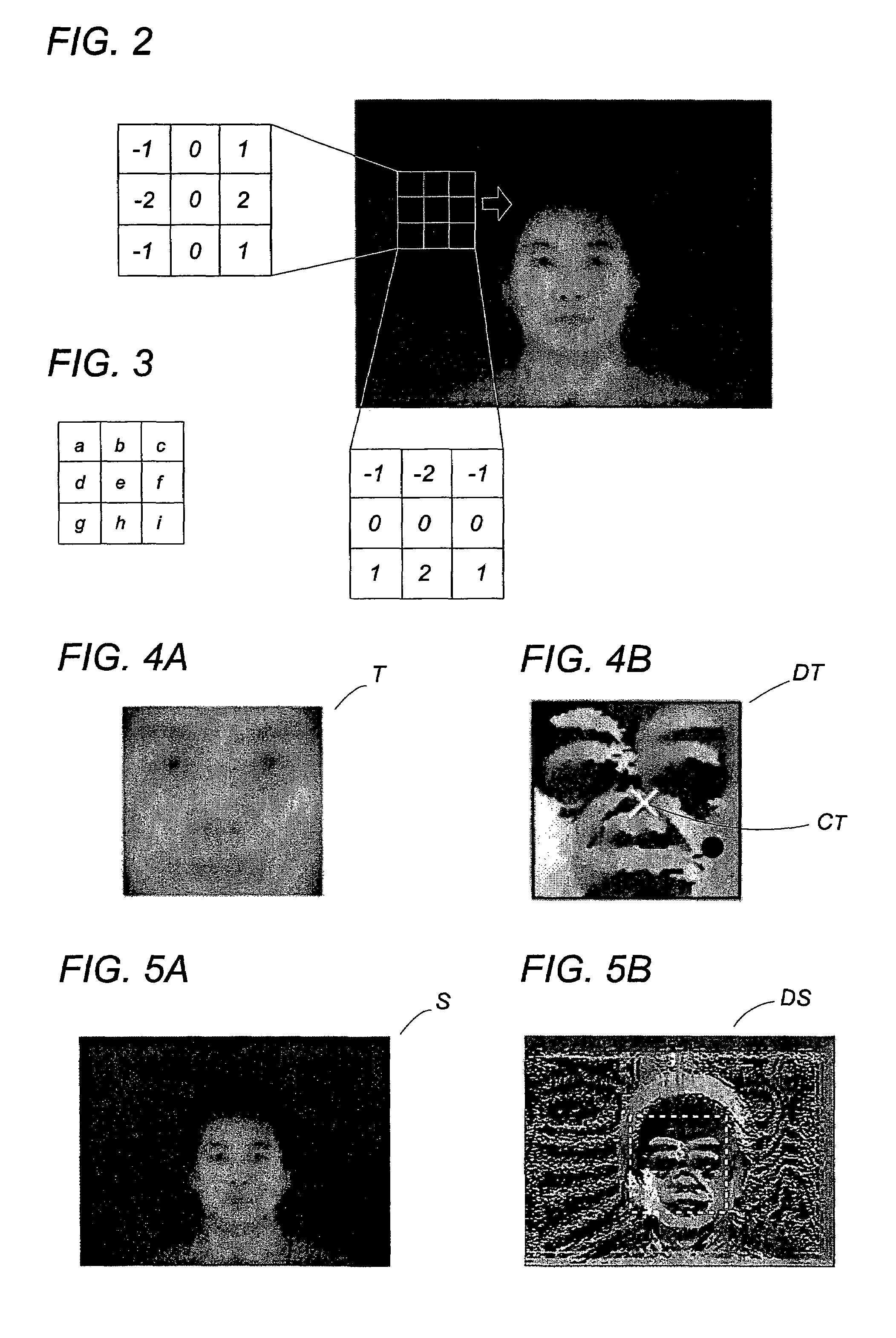Object recognition system
a recognition system and object technology, applied in the field of object recognition system, can solve the problems of not being reliable, not suitable for rapid human face recognition, missing mask area, etc., and achieve the effect of reliable and easy recognition
- Summary
- Abstract
- Description
- Claims
- Application Information
AI Technical Summary
Benefits of technology
Problems solved by technology
Method used
Image
Examples
Embodiment Construction
[0085]Referring now to FIG. 1, there is shown a human face recognition system in accordance with a first embodiment of the present invention. Although the illustrated embodiment discloses the system utilized for human face verification as one typical application, the present system is not limited thereto and can be equally utilized in combination with a security camera or the like camera for controlling the camera to zoom on the human face and / or make an angular adjustment, realizing easy confirmation of the human face in the subject image. In this sense, the system may be also incorporated in an image processing system which is designed to correct the human face image for easy and reliable identification of the human face. Further, it should be noted that the present invention should not be limited to the human face recognition, and could be equally utilized for recognition of any other object having peculiar image properties, for example, assembly parts running in a factory assemb...
PUM
 Login to View More
Login to View More Abstract
Description
Claims
Application Information
 Login to View More
Login to View More - R&D
- Intellectual Property
- Life Sciences
- Materials
- Tech Scout
- Unparalleled Data Quality
- Higher Quality Content
- 60% Fewer Hallucinations
Browse by: Latest US Patents, China's latest patents, Technical Efficacy Thesaurus, Application Domain, Technology Topic, Popular Technical Reports.
© 2025 PatSnap. All rights reserved.Legal|Privacy policy|Modern Slavery Act Transparency Statement|Sitemap|About US| Contact US: help@patsnap.com



